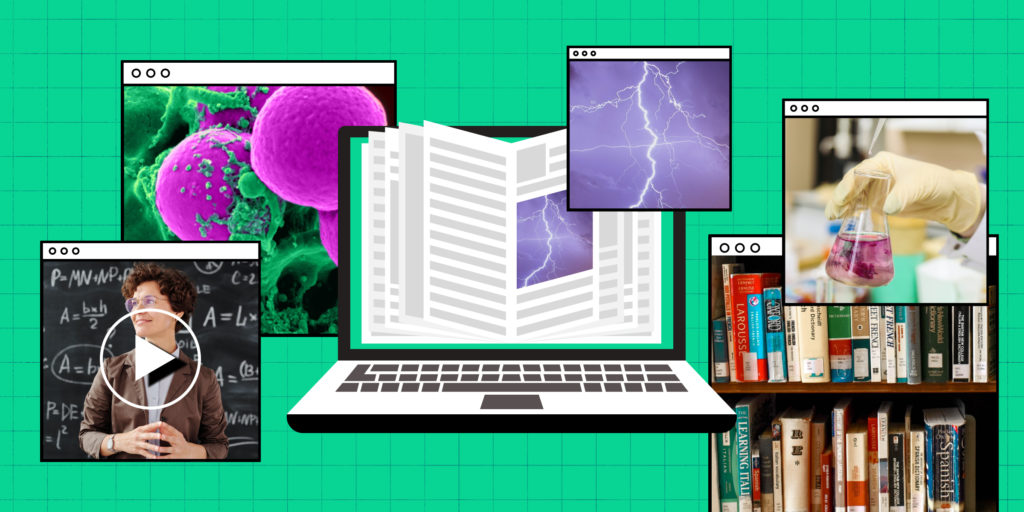In the year 2019, it’s really stating the obvious that mobile devices have had a massive cultural impact. All it takes is a quick look around to see how people behave at restaurants or when riding the train to observe their eyes glued to their smartphones. For better or for worse, a smartphone, tablet or other small mobile device has allowed unprecedented, near-limitless access to information, entertainment and social networks, all with a few swipes.
The current generation of students have grown up in this technology-soaked world and know no other way to live their lives. It’s the generation that are multi-taskers. Exhibit A: the teenager who can simultaneously watch Netflix, while listening to music, texting friends, posting to Instagram, all while having a conversation with their parents. I know from experience.
Meeting students where they study
A few years ago, I decided to go all-digital in my General Chemistry class. The textbook, homework, lecture content and tests all became accessible online. It wasn’t long before I was having a conversation with a student about some of the homework questions I had assigned. The student revealed to me that they were doing their homework at the bus stop, at which point I interjected with “wait… the bus stop?!?”
Shortly after, another student proceeded to tell me that she really liked having access to the textbook and homework on an app on her phone because it allowed her to use small chunks of time to study and do homework. It turned out this student was a military veteran coming back to college to get a degree and had a young daughter to take care of. It was a revelation to be told that she was studying and working on homework while waiting with her daughter at a doctor’s appointment.
Over my 12 year teaching career, I have proactively adapted technology into my courses in a variety of ways. From clickers, to wikis, to online homework and tests. Yet for some reason, I still had this notion that, despite all of these cultural changes as a result of technology, that all students were still sitting down for a few uninterrupted hours in the evening at their desk to study and complete their homework. While this is likely still the case for some, it makes sense that many students today are actually completing homework in these small blocks of time that they have, while also going about the rest of their day.
Embracing ‘on-the-fly’ learning…when appropriate
This got me thinking about what type of learning can be done in short intervals. Can students really learn something in only 5 minutes? General Chemistry is a largely problem solving–based subject that I initially didn’t think was conducive to learning “on-the-fly” in short spans while using a mobile device. After all, how can students possibly solve algebra-based problems while standing at the bus stop?
The fact is, there is still a need in some cases to sit at a desk with a pen and paper to solve problems in the same way they’ve always been done. But General Chemistry also has a significant portion of memorization-based learning that is required in order for students to learn the “language” (chemical formulas, naming compounds, etc.) of chemistry. There are also many instances where students are learning more conceptually than analytically. I believe it’s these latter modes of learning that fit well with the “on-the-fly” approach.
Cognitive science tells us that “chunking” helps us manage certain aspects of memorization. For example, it’s quite hard to remember a single 10-digit random number sequence, but most of us can remember multiple 10-digit phone numbers by grouping numbers in chunks of 3, 3 and 4. In General Chemistry, students have to similarly memorize the element names and symbols. It’s quite daunting to look at the periodic table of elements with the goal of memorizing it. But each column (or group) on the periodic table represents a “chunk” of elements. For example, the “chunk” of noble gases contain the five elements (with their symbols) helium (He), neon (Ne), argon (Ar), krypton (Kr) and xenon (Xe).
This is where the instructor can be a real difference maker in student-learning. By designing learning tools to facilitate chunking, students will be more successful in memorizing key information no matter where they learn. Committing the entire periodic table to memory as a whole is a time-consuming and probably largely unsuccessful process. But chunking it into groups of 5 or so elements is easily manageable by most students. And perhaps more importantly for today’s students, activities that involve these small “chunks” are very conducive to learning on-the-fly using mobile devices.


